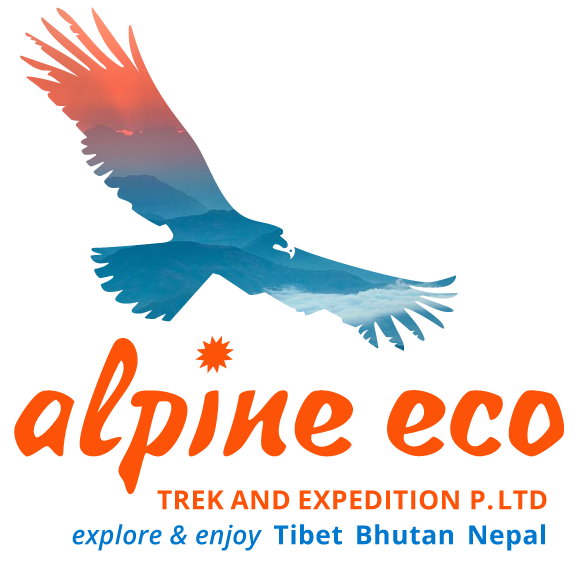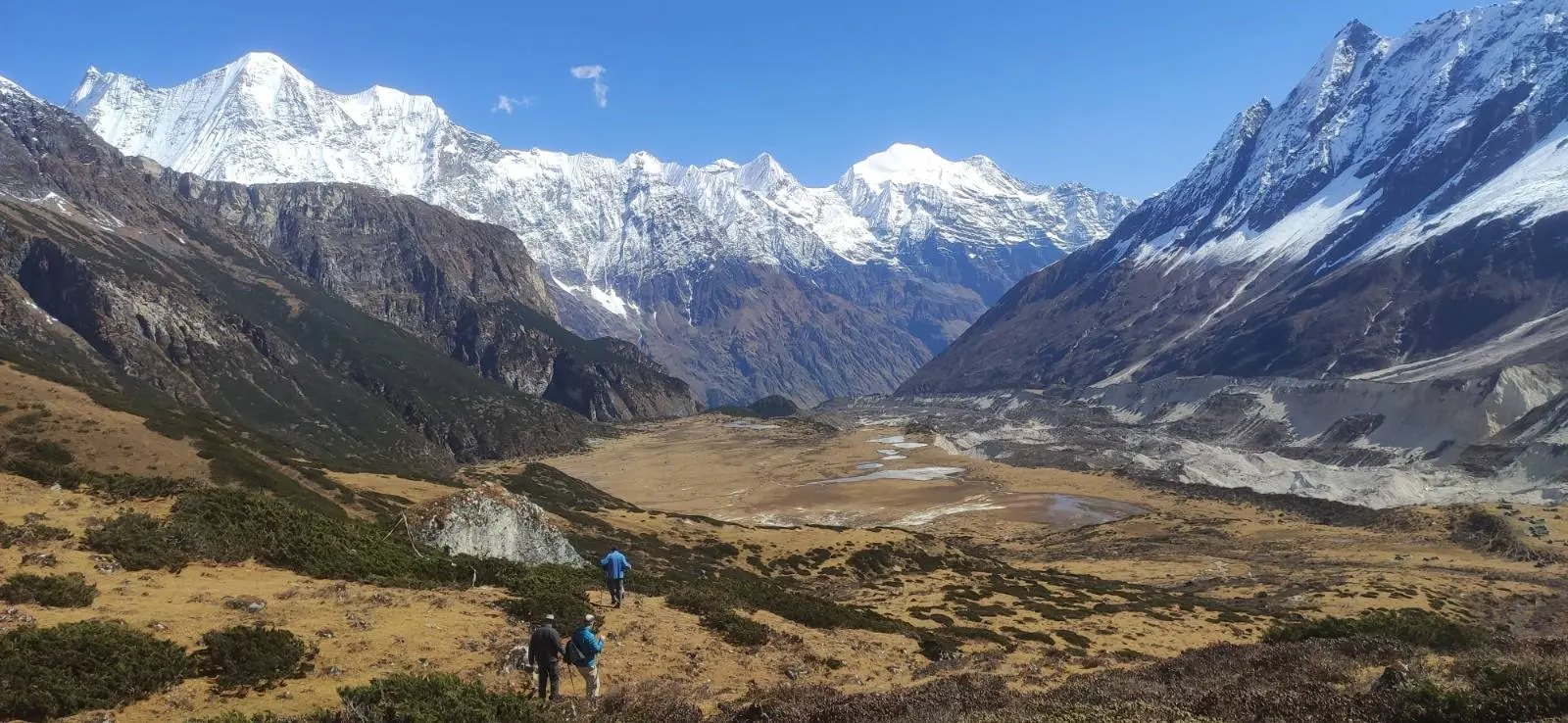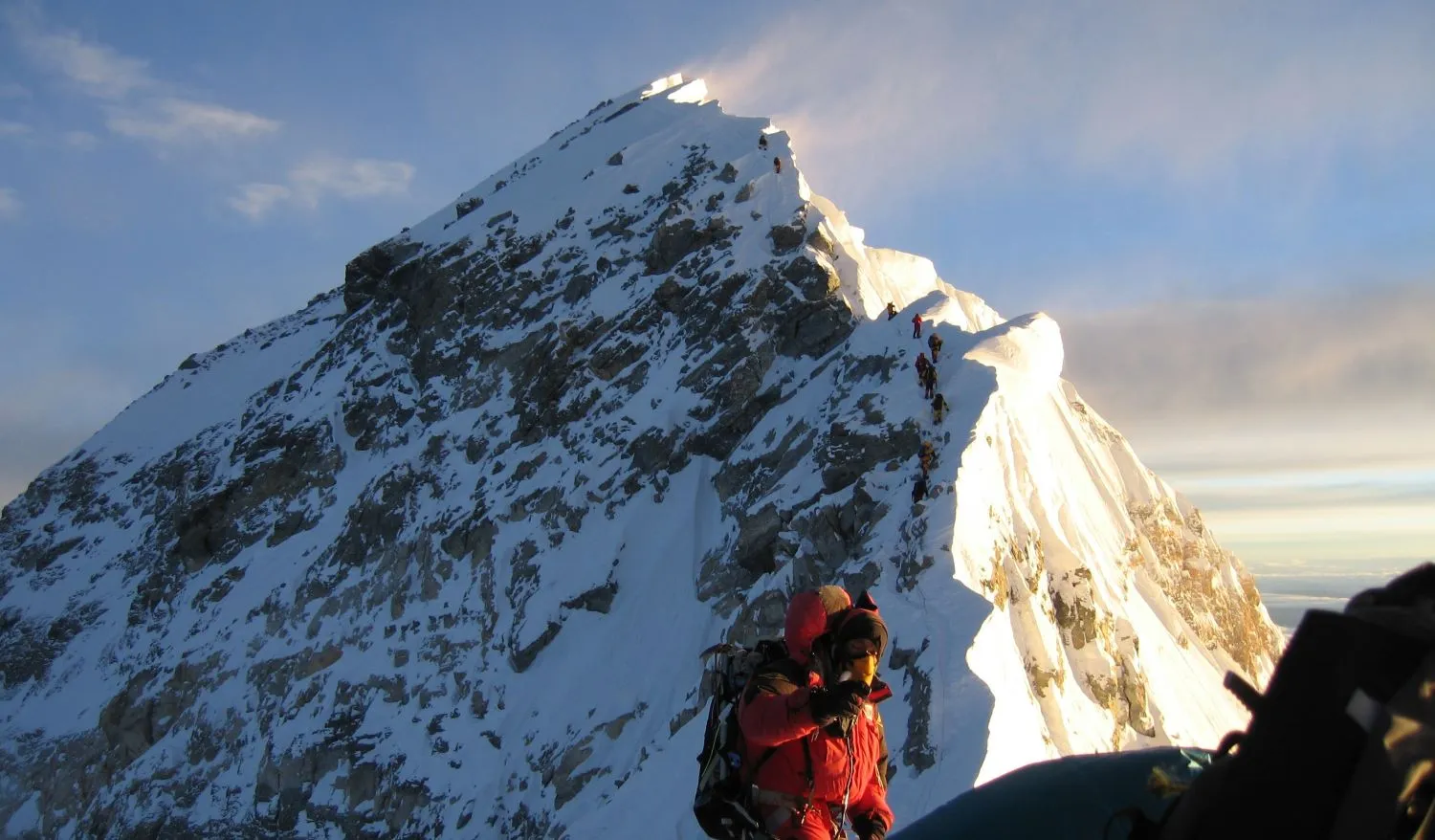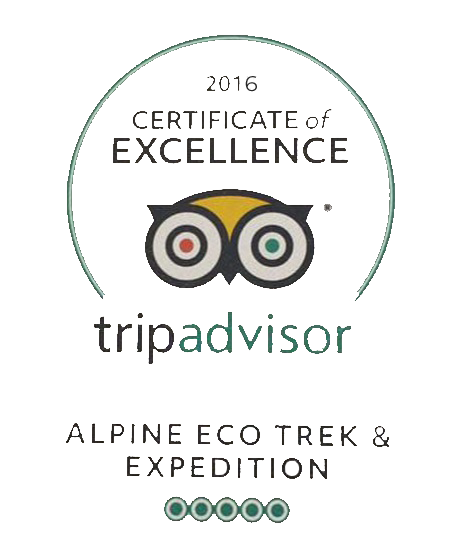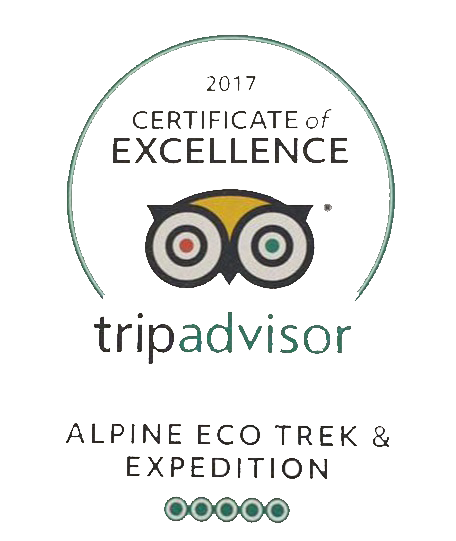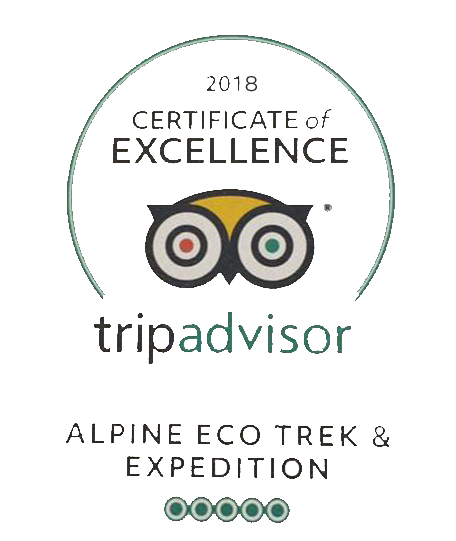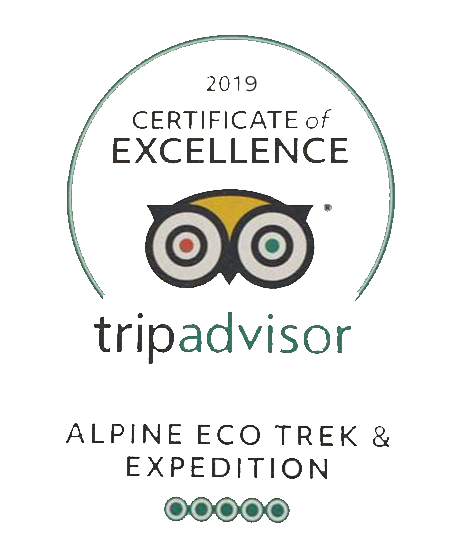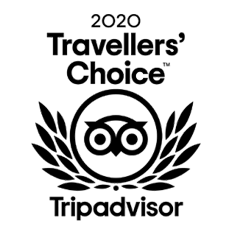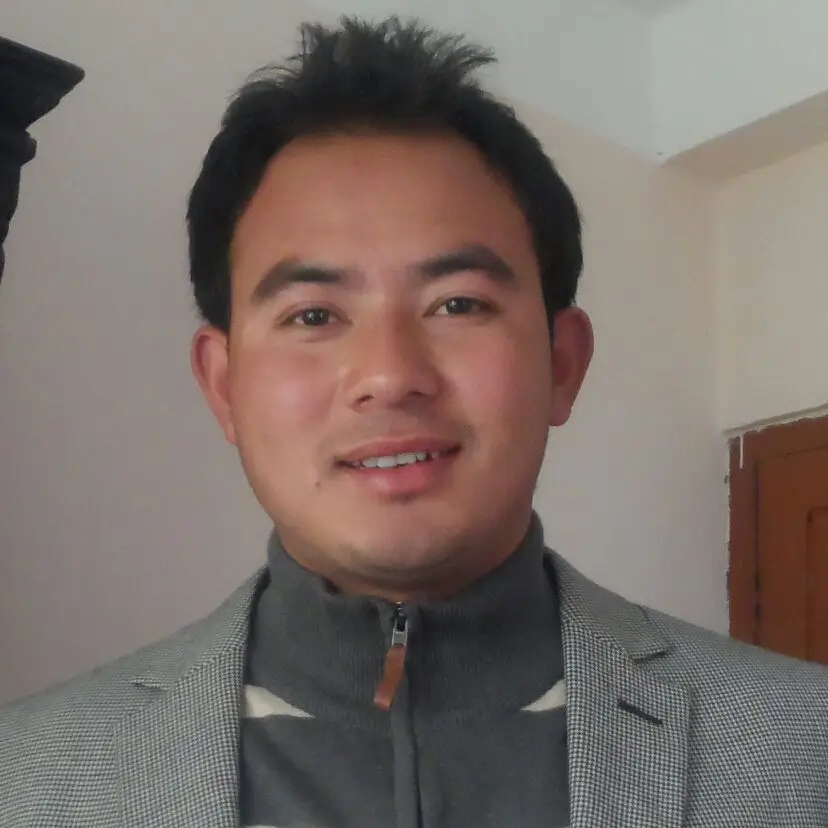Manaslu Trek Itinerary, Permits, Guide, Weather
-
March 26, 2023
-
Ram Kumar Adhikari
Manaslu Trek Itinerary
The Spirit of the Mountain – Mt Manaslu also known as the world’s 8th highest mountain was successfully summited by the Japanese team in 1956. The Manaslu Circuit trek with Alpine Eco Trek and Expedition takes you on an adventurous journey around the mountain. Consisting of 13 trekking days, this trekking package comes in 18 days including travel days. Located in a restricted zone the Manaslu Circuit trek has less crowded trails and more virgin paths. You’ll be able to see incredible mountain views as well as cross one high-altitude mountain pass, the Larkya La at 5,160m or 16,929ft! Join us on this spiritual outdoor adventure, and experience a real trekking adventure in an almost untouched Himalayan paradise.
Start off in Kathmandu. After meeting up with our team and settling into your booked hotel we suggest taking a stroll around and experiencing Nepal’s city Evening life. The next day while we prepare your permits for the Manaslu Circuit trek you’ll be going on a guided sightseeing tour to Kathmandu’s three points. Kathmandu’s Royal durbar or Palace Square, the Swayambunath Stupa and the mighty Boudhanath Stupa. In the afternoon we meet back up at the hotel and go over the itinerary of the Manaslu trek. On day three, we depart Kathmandu and drive to Sotikhola. It’s a long but scenic drive. The first part up to Dhading Besi is mostly pitched road but from there we go a bit more off-road. Arriving at Sotikhola gives such a surreal feeling and you soon realize that his adventure is about to start! For the first couple of days, we’ll be trekking in the lower hills gradually gaining elevation.
At our fifth village, Samagoan (3,525m/11,565ft) we hold our first acclimatization day to counter any altitude sickness. During this day it’s important that we gain elevation and head back down for overnight. We plan to visit the nearby Pungyen Buddhist Gompa and hike back down to Samagoan. The next village Samdo (3,860m/12,664ft) is where we hold another acclimatization day. This time we have two options. One is the longer hike to the Gya La Mountain Pass. The other and more recommended option is to take a hike behind Samdo where amazing viewpoints await.
From Samdo it will take us 2 days to reach the Larkya La Pass, the main highlight of the trek. The pass gives access to the western Annapurna region. And also to more views of the Himalayas. Descending down from the pass we stay at Bhimtang, Tilije, Tal and finally at Syange the last village of the Manaslu Circuit trek.
This trek offers you a variety in topography from jungle-filled hills to barren rocky and ultimately snowy Himalayas. Explore not only the Manaslu region but also the Annapurna region. Depending on the season you might be able to spot a snow leopard. The villages and locals have their own unique cultures and during the trek will be visiting a couple of monasteries and gompas as well. Join Alpine Eco and book today the Manaslu Circuit trek of 18 days in Nepal.
Now also available for the Manaslu Circuit trek is our Early Bird Offer. By pre-booking this trek in advance we can guarantee the best available guesthouses and the best guides as well during the Manaslu Circuit trek.
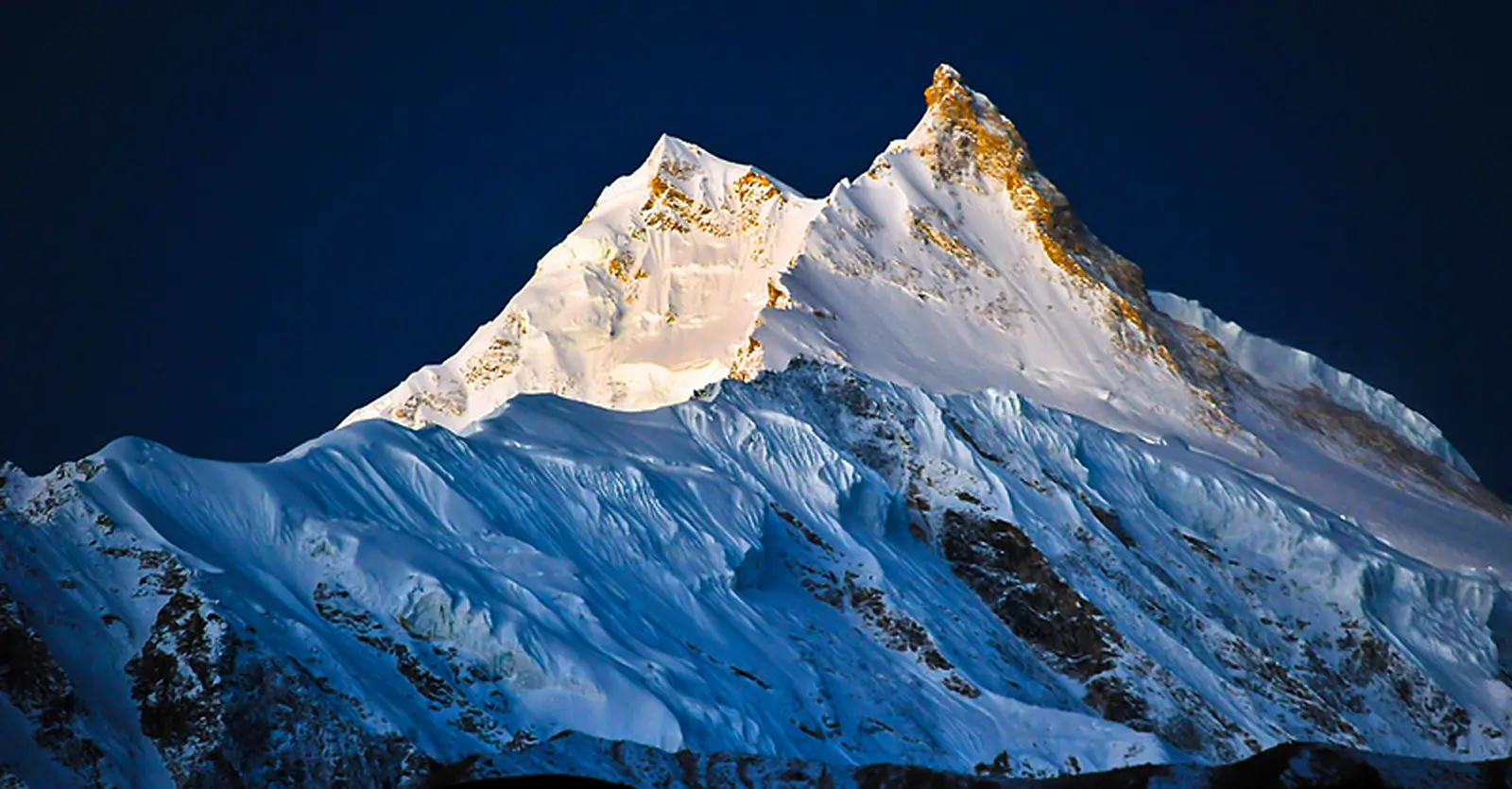
Short itinerary:
Day 1: Arrive in Kathmandu
Day 2: Guided sightseeing + Trek prep
Day 3: Drive to Sotikhola (710m/2,329ft), 8 to 9 hours
Day 4: Trek to Machhakhola (900m/2,953), 6 to 7 hours
Day 5: Trek to Jagat (1,420m/4,659ft) 6 to 7 hours
Day 6: Trek to Deng (1,805m/5,922ft), 6 to 7 hours
Day 7: Trek to Namrung (2,640m/8,661ft), 6 to 7 hours
Day 8: Trek to Samagoan (3,525m/11,565ft), 6 to 7 hours
Day 9: Rest day: hike to Pungyen Gompa and back to Samagaon, 5 to 6 hours
Day 10: Trek to Samdo (3,860m/12,664ft), 4 to 5 hours
Day 11: Rest Day in Samdo for proper acclimatization
Day 12: Trek to Dharamasala and then to Larkya Base Camp (4,450m/14,600ft), 4 to 5 hours
Day 13: Trek to Bimthang (3,720m/12,205ft) via Larkya La (5,160m/16,929ft), 8 to 9 hours
Day 14: Trek to Tilije (2,300m/7,546ft), 5 to 6 hours
Day 15: Trek to Tal (1,700m/5,577ft), 5 to 6 hours
Day 16: Trek to Syange (1,080m/3,543ft), 6 to 7 hours
Day 17: Drive back to Kathmandu
Day 18: Final Departure, fly home.
Trip Highlights:
- Discover the cultural highlights of Kathmandu
- Trek into a Himalayan paradise with less crowded trails
- See Mt Manaslu the 8th highest mountain in the world up close
- Visit and overnight stay in local Himalayan villages of different ethnicities such as Gurung and Sherpa
- Enjoy incredible Himalayan views of multiple famous peaks
- Cross the Larkya La Mountain Pass
- Trek through two amazing Himalayan regions of Nepal in one trek
- Chances to see rare and exotic fauna and flora.
Manaslu Trek Detailed itinerary:
Day 1: Arrive in Kathmandu
Upon your arrival in Nepal to start the Manaslu Circuit trek, our Alpine Eco Trek & Expedition team will be awaiting you at the arrival section of Kathmandu’s international airport. We hold a small welcoming ceremony which is traditional in Nepal and offer blessings to our visitors! Afterward, we shuttle to your booked hotel in Kathmandu. The touristic district, called Thamel, is where you’ll find most hotels, restaurants, shops, and trekking gear outlets. Having checked in to your hotel, we plan to meet up the next day after breakfast at the reception. For your first night in Nepal, we do suggest trying out one of the local restaurants and delicacies as well as taking a stroll around to get a feel of the area. Overnight at your booked hotel.
Day 2: Guided sightseeing + Trek prep
Good morning! It’s your first morning in Nepal, and we have a great day planned for you! While we prepare your Manaslu Circuit trek permits, you’ll be enjoying a guided sightseeing tour around Kathmandu after breakfast. Our guide will be awaiting you at the reception at the appointed time. Kathmandu is a city filled with temples, stupas, monasteries and important landmarks. To see them all will take many days, hence we take you to the most scenic and popular hotspots of Nepal’s cultural capital city. We start off with a visit to the ancient palace and temple courtyards of Basantapur, also known as Kathmandu’s Durbar Square. Now transformed into a cultural paradise interlinked with cobbling alleys and packed with local markets and handicraft shops. Having enjoyed our time strolling around the streets of Basantapur we take a short drive to Swayambunath. A peaceful Stupa on the outskirts of Kathmandu’s inner city. The stupa is located on top a forested hill, inhabited by hundreds of Macaques monkey families. Lastly, you’ll be visiting the huge white Stupa of Boudhanath. Surrounded by yoga and meditation centers as well as a rooftop restaurant.
We meet back at the hotel in the late afternoon and go over every detail of the Manaslu Circuit trek, and make sure you have all your trekking gear ready for the trek!
Day 3: Drive to Sotikhola (710m/2,329ft)
After an early hotel breakfast, we meet up at the reception and prepare to set out. Our destination? The first village of the Manaslu Circuit trek, Sotikhola (710m/2,329ft)! The roads in Nepal, especially Kathmandu have all but recently been updated and paved or pitched. Making the first part of the journey comfortable and scenic. Dhading Besi, the main village of the Dhading district in Nepal is from where the road becomes more adventurous and a bit rough. Nevertheless, the views of the hilly countryside are superb! After reaching the village of Arughat another big village of the area we drive a bit further until reaching our final destination at Sotikhola. We check into the local guesthouse. (See our Early bird offer to make sure to get the best guesthouse rooms early on) and enjoy dinner. Tomorrow we start the first day of the Manaslu Circuit trek! Overnight stay at the guesthouse.
Day 4: Trek to Machhakhola (900m/2,953)
Good morning! It’s your first day in the Nepalese lower Himalayas! Enjoy a hot beverage and a hearty breakfast at the guesthouse as we have set the first steps on the Manaslu Circuit trail today. We start of by crossing the bridge and trekking through a lush Sal forest. Followed by a short ridge climb above the raging water of the below Buri Gandaki River. Passing by the village of Khursane we follow the rocky trail leading up and down along a cliff ridge passing by two waterfalls. The trail then leads downwards across some lower rice farms and then back up to the village of Labubesi. It’s the final stretch now to Machhakhola and we continue on the rocky trail following the sandy bed of the Buri Gandaki River. A suspension bridge across the river leads us straight into the village! Dinner and overnight stay at the guesthouse.
Day 5: Trek to Jagat (1,420m/4,659ft)
It’s the second morning of the Manaslu Circuit trek. You might feel a bit soar from your first day of trekking. Nothing a good breakfast can’t fix! As today is a beautiful day. We start of by following a narrow trail that leads to Khorlabesi after crossing the Tharo Khola. Followed by more ups and downs we reach Tatopani. Meaning literally “hot water”, this village has its own hot water spring! From here the trail leads across another ridge and crosses the Buri Gandaki River again via a suspension bridge. Entering a landslide area now we trek according to the safety rules and follow the guidelines set by our trekking guide. We pass by Dobhan village and cross the Yaru Khola River. Now stone steps lead up to Tharo Bharyang. For the last part of today’s trek we cross the west bank of the Buri Gandaki River, ascend over the ridge and follow the river until reaching Jagat. Dinner and overnight stay at the guesthouse.
Day 6: Trek to Deng (1,805m/5,922ft)
Today we head for the village of Deng. After breakfast, we depart Jagat and follow the trail over a rocky ridge until reaching Salleri. Followed by descending to Sirdibas. Afterward the valley opens up a bit and the trail leads to the Ghatta Khola River. We continue upstream and cross a huge suspension bridge into the Gurung village of Philim. Passing through the village towards a path above the lowest laying house the trail heads north. Now we cross the millet fields to Ekle Bhatti a smaller farming village. Continuing on through a gorge and descending further down towards a more grassy area. We cross the Buri Gandaki River a few more times and enter a bamboo forest near the Deng Khola River. The small village of Deng lays just across the river! Dinner and overnight stay at the guesthouse.
Day 7: Trek to Namrung (2,640m/8,661ft)
After breakfast we make a short village tour of Deng before continuing the trek. Today we head to Namrung and have a lot of elevation to gain. We start by crossing the Buri Gandaki and ascend about 100m/328ft to Rana village. Now heading west in the Budri Gandaki Valley we pass through lush forests and by multiple Mani Walls as we make way to Ghap. Alpine Eco follows an alternative route here that leads through the village of Prok. Why? From Prok village you can visit the nearby viewpoint to see amazing views of Mt Shringi Himal (7,083m/23,238ft)! The trek continues after having enjoyed the scenery from Prok and we head on by crossing the Buri Gandaki again for a few times. The trail has a couple of Buddhist Gompas along the way as we head further upstream. As we head higher and higher the forest becomes less thick and we face a final climb towards Namrung. Dinner and overnight stay at the guesthouse.
Day 8: Trek to Samagoan (3,525m/11,565ft)
Upon waking up in Namrung you might want to go outside first to see incredible views! Especially of Mt Shringi Himal (7,083m/23,238ft), Mt Ganesh Himal (7,422m/24,350ft), and Mt Himal Chuli (7,893m/25,896ft). After breakfast, we continue the Manaslu Circuit trek and follow the trail steadily upwards. As we pass through the forest we reach the barely fields of Lihi village. This small town has also multiple Chortens which we can visit. Now we descend a bit and pass through the villages of Sho and Lho. From here you’ll get to see your first good views of Mt Manaslu (8,163m/26,781ft). Trekking further we reach Shyala. In this village we get to see and visit the Ribung Buddhist Gompa! Furthermore, the village is surrounded by mountains. To the right huge glaciers and Mt Manaslu, to the left Mt Himal Chuli (7,893m/25,896ft) and Peak 29 aka Ngadi Chuli (7,871m/25,823ft). Enjoying the views, we trek on until reaching Samagoan village. Dinner and overnight stay at the guesthouse.
Day 9: Rest day: hike to Pungyen Gompa and back to Samagaon
Good morning on day 9 of the Manaslu Circuit trek in Nepal! Today is all about acclimatization and exploration! As we head closer to the famed high-altitude mountain pass, Larkya La (5,160m/16,929ft) it’s important to not elevate to fast, as it can increase the risk of getting AMS (Acute Mountain Sickness). Thus, we stay an extra day at Samagoan. We explore the village and make a hike up to the Pungyen Gompa. The monastery is quite old and has its own unique legend! At the village we get to see the local Sherpas busy with their daily tasks, roam around the Mani Stones and enjoy the views. In the evening we go over tomorrow’s plan, and enjoy our last night at Samagoan. Dinner and overnight stay at the guesthouse.
Day 10: Trek to Samdo (3,860m/12,664ft)
Having properly acclimatized to face higher elevations we depart Samagoan and make way for Samdo after breakfast. The first part of today’s trek heads down to the familiar Buri Gandaki River. After crossing a small bridge leading over a side stream the trail leads in two directions. The left path heads for Manaslu Base Camp. We take the Larkya La trail and pass by a few Mani Walls. Trekking above the River is quite easygoing as we enter beautiful birch and juniper forests and head for Kermo Kharka. Now we descend the upper elevated trail and cross the river once again. Followed by a short steep climb we get to see a large Kanji symbol from a stone arch. A bit further is Samdo village. Dinner and overnight stay at the guesthouse.
Day 11: Rest Day in Samdo for proper acclimatization
On day 11 of the Manaslu Circuit trek we hold a second acclimatization day to prepare for the nearby Larkya La Pass. Alpine Eco presents you with two options for today’s acclimatization.
Option 1: A highly recommend hike behind Samdo towards one of the old trade routes between Nepal and Tibet. During this hike, you will be able to see incredible views of Mt Manaslu, Mt Simrang, Mt Hiunchuli, Ngadi Peak, and Larkya Peak. As well as pass by various Doksas or herding stations and get chances to spot the Lophophorus, Lammergeyer and the Himalayan Griffin!
Option 2: Also providing amazing views, as a second option we take a longer and a bit more tiring hike to the Gya La Mountain Pass. The hike takes place just north of Samdo village and will take the whole to complete.
No matter your choice, the main target of today acclimatization will be accomplished! In the evening we enjoy dinner and overnight say at the guesthouse.
Day 12: Trek to Dharamsala and then to Larkya Base Camp (4,450m/14,600ft)
We have a great day ahead as we head to the foot of the Larkya La Pass, Dharamsala. The trek starts with crossing the buri Gandaki again and making our way upwards. We cross two smaller streams and follow the trail bending around the Salka Khola Valley. During this time of the trek the Larkya La Glacier comes in sight. From here on its ascending only until reaching a stone shelter. This is Dharamasala or Larkya Phedi. After checking in we make a short trip to visit the nearby Larkya Base Camp. We have an early departure tomorrow so we make sure to get to bed on time. Dinner and overnight stay at the guesthouse.
Day 13: Trek to Bimthang (3,720m/12,205ft) via Larkya La (5,160m/16,929ft)
We wake up as early as possible and take breakfast. It’s crucial that we leave early to get ahead of the winds! A brief climb takes us north of the Larkya Glaciers into a valley. From here superb views of Mt Cho Danda and Larkya Peak can be seen. Now crossing over the glacial moraines the trail starts to ascend. The last section is quite steep and we take step by step to reach the top of the pass. Marked with prayer stones and flags a big board with the words Larkya La stands on top the pass. We take some well-deserved selfies and enjoy the views of; Mt Himlung Himal, Mt Cheo Himal, Mt Kangguru, and the huge white tops of Mt Annapurna II! Descending from the pass is longer than the previous ascend and we make our way downhill to Bimthang.
With the sun setting slowly and the views now of the Annapurna region it’s a quite scenic trek today. Dinner and overnight stay at the guesthouse.
Day 14: Trek to Tilije (2,300m/7,546ft)
We enjoy a great morning in Bimthang and enjoy the views of Mt Lamjung Himal, Mt Himlung Himal, Mt Cheo Himal, and of course Mt Manaslu! We start with a descent and a crossing of a pasture named Sangure Kharka. From here we cross the Dudh Khola River and trek through a beautiful rhododendron forest. Continuing on we make way through a valley ascending slowly until reaching Karche. Then we cross more fields and make a steep ridge climb. The trail leads in a big bend towards the riverbank. Gho village is just nearby and depending on your stamina from yesterday’s pass-crossing we might stay here for the night. It is however better to continue a bit on to Tiljie. Here better accommodation and service can be found! Dinner and overnight stay at the guesthouse.
Day 15: Trek to Tal (1,700m/5,577ft)
On day 15 of the Manaslu Circuit trek we’ll be entering the famous Annapurna region of Nepal. After breakfast, we leave Tiljie or Gho behind and start off with a small ridge climb. Followed by an easy part over a stone-paved path, leading through a smaller village. A bit further we cross the Dudh Khola River and start to ascend near by a chorten-shaped arch. We pass by a Mani Wall and enter Thonje. Here at the village our permits will be checked as we enter the Annapurna region. Continuing on we reach Dharapani. The trail gets busier now as we overlap with the popular Annapurna Circuit trek. We head on south and go through Karte village. From here we trek on and cross the Marshyangdi River. The trail now leads directly to Tal village resting peacefully below a scenic waterfall! Dinner and overnight stay at the guesthouse.
Day 16: Trek to Syange (1,080m/3,543ft)
It’s our last day of trekking the Manaslu Circuit trail, and we enjoy a hearty breakfast before leaving Tal. For the first part of today’s trek we make way to the village of Chyamje by crossing the Marshyangdi Khola River. From here the valley widens with spectacular terrace field views and small village clusters spread across the higher hills. Now we descend further and head into the pine and rhododendron forest. A bit further ahead is Syange, our last Himalayan village. Dinner and overnight stay at the guesthouse.
Day 17: Drive back to Kathmandu
Your last morning in the Himalayas. We enjoy breakfast and some of the last views, before driving back to Kathmandu. It’s a long drive of about 8 to 9 hours. But equally scenic! Most parts of today’s journey goes along the Marshyangdi and Trishuli Rivers. We pass by the busy town of Besisahar and make a few stops along the way to enjoy the views. Lunch we’ll take along the way at one of the roadside restaurants catering buffet to travelers. Once back in Kathmandu, we transfer you to your booked hotel for check-in and rest. Later in the evening Alpine Eco Trek & Expedition invites you to a thank you and farewell dinner in order to celebrate the success of your Manaslu Circuit trek in Nepal! Overnight at your booked hotel.
Day 18: Final Departure, fly home
Day 18 marks the final day of the Manaslu Circuit trekking package. After hotel breakfast and check out we shuttle you to the airport for your ongoing destination. Do you wish to extend your holiday in Nepal? Alpine Eco has multiple other packages available such as touring, safari, and adventure packages such as; paragliding, rafting etc. Do request us for any additional packages.

Manaslu Trek FAQs For Cost, Guide, Permit and Weather:
How difficult is the Manaslu Circuit trek?
Rates as a moderate trek, the Manaslu Circuit trek is not considered that difficult. There are some steep and off-the-beaten path parts during the trek. We do recommend, especially if it’s your first time in the Himalayas to do some form of stamina and fitness training prior to coming to Nepal. This way you’ll be able to enjoy the Manaslu Circuit trek without any difficulty!
How long is the average trekking day of the Manaslu Circuit trek?
The average trekking day of the Manaslu Circuit trek is approx. 6 to 7 hours long. We aim to trek from morning to late afternoon. This way you get to enjoy the best parts of the day and reach your overnight destination before the sun sets. We do also offer a 6 or 7am wake-up call service during the trek!
How high does the Manaslu Circuit trek go?
The highest part of the Manaslu Circuit trek is at 5,160m or 16,929ft, during the crossing of the famous Larkya La Mountain Pass! In order to face such altitude two planned acclimatization days will be held during the 15 days trek.
Is the Manaslu Circuit trek doable for a beginner?
Yes, Alpine Eco Trek and Expedition has successfully guided multiple beginners across the Manaslu Circuit trek every year! Our guides are the best in the field and take care of each individual. In order to really enjoy this trek we do recommend beginners to pre-prepare a few months before starting the trek. Simple fitness exercises and basic stamina training are enough.
When to plan the Manaslu Circuit trek?
As most treks in Nepal, the best time of year to plan the Manaslu Circuit trek is during the spring season of fall/autumn season. The crossing of the Larkya La Pass makes is impossible to do during the winter and monsoon seasons. Spring in Nepal starts from March and ends in May, while the fall/autumn season starts in the middle of September and ends near the first days of November.
What is special about Manaslu? How is it different from Everest and Annapurna?
First of all the Manaslu region is classified in a restricted zone, unlike the Everest and Annapurna regions. This means that less trekkers pack the trails, less litter, no overbooked guesthouses or long waiting queues! Furthermore, during the Manaslu Circuit trek you’ll also be trekking in the Annapurna region making this a unique trek as well. While both the Everest and Annapurna regions are beautiful and considered trekking paradises, we feel that you haven’t experienced a real Himalayan trek without the Manaslu Circuit trek!
Can I do the Manaslu Circuit trek solo?
No, you cannot trek the Manaslu Circuit solo! The trek is situated in a restricted zone obligating trekkers to trek in pairs with one licensed and professional guide. Alpine Eco Trek and Expedition has multiple group joining offers and fixed departure dates available for solo travelers wishing to experience the Manaslu Circuit trek!
Will I need supplemental oxygen during the trek?
No, you won’t need any supplemental oxygen during the Manaslu Circuit trek. We hold proper acclimatization days and with the highest point of the trek being below 5,500m or 32,808ft it is not required.
What is the average group size of the Manaslu Circuit trek?
Average group sizes for the Manaslu Circuit trek vary per booking or group joining. The minimum is 2 trekkers and the maximum group size is 20 trekkers. Every booking or group joining is in between those numbers.
How to best train for the Manaslu Circuit trek?
While there are multiple exercises or sports that you can do, to best train for the Manaslu Circuit trek we believe that strength endurance training is the best way. By strengthening the core muscles of your legs, the trek will go far smoother. Increasing your stamina is also required as it are long trekking days with lots of up and down parts. Improving your breathing technique by swimming or going for longer hikes are also recommended.
Where is the starting and ending point of the Manaslu Circuit trek?
Many different companies provide slightly different starting and ending locations for the Manaslu Circuit trek. Alpine Eco with many years of experience starts the trek at Sothikhola at an elevation of 710m or 2,329ft. The end point of the Manaslu Circuit trek is at the village of Syange 1,080m or 3,543ft.
Do I need permits to trek the Manaslu Circuit?
Yes, you do need permits for the Manaslu Circuit trek! As it is located in a restricted zone, you will need a Manaslu Conservation Permit, and Restricted Area Permit as well as an Annapurna Conservation Area Permit and a TIMS Card. Yes it’s a lot, but luckily Alpine Eco manages all required permits for the Manaslu Circuit trek for you.
How much does the Manaslu Circuit trek cost per person?
The cost per person for the Manaslu Circuit trek is PLEASE PUT THE RATE HERE. Alpine Eco trek offers the best value for money with the best services. Furthermore if you book our special early bird offer for the Manaslu Circuit trek you can get an additional discount as well!
What type of accommodation can I expect during the Manaslu Circuit trek?
The type of accommodation that you can expect during the Manaslu Circuit trek are guesthouses and small lodges. During the trek, we will book the best available ones. Every guesthouse has 2 or 3 beds per room and a public bathroom. The common hall is where u get paid Wi-Fi access and can eat a warm meal. Hot water is available but depending the altitude or guesthouse can come at an additional charge.
Why is teahouse/guesthouse trekking better than camping during the Manaslu Circuit trek?
Well a couple of reasons come to mind why guesthouse trekking is better than camping during the Manaslu Circuit trek. First of all, if you calculate the cost, guesthouses are cheaper and include meals as well. Comfort is another reason, imagine being soared from a whole day trekking on rugged trails. Would you rather spend the night in a warm soft bed or on hard cold ground? While camping is not a bad option if you are looking for an authentic outdoor experience, it is clear that guesthouse accommodations are the better option in terms of value and comfort.
What are the meal options during the Manaslu Circuit trek?
Meal options during the Manaslu Circuit trek vary from guesthouses but are mostly similar. In the morning for breakfast, there is a variety of options between traditional and international dishes, as well as in the evening for dinner. Every guesthouse has veg or non-veg items. We do recommend sticking to veg at the higher elevations as preservation facilities are not available and non-veg items can make you sick! The Sherpa soup or Thupka is incredibly nutritious and delicious! If you are unsure what to order you can always get a suggestion from our guide.
How are telecommunication and Wi-Fi facilities in the Manaslu Region?
As you might expect cell tower and Wi-Fi facilities in the Manaslu region is very limited. During the trek in the lower elevations, there will be some parts that have connectivity but if any very poor. Your best option is to take a Nepalese SIM Card and use the option for mobile data when you have cell tower reception in the guesthouses. These also offer paid Wi-Fi and have a sat phone for rent and emergencies.
What should my insurance policy cover on the Manaslu Circuit trek?
Insurance is required for any trek in Nepal, but what should your insurance policy coverage on the Manaslu Circuit trek? With all the various options available it’s normal to get confused! Here’s what your insurance policy should surely cover while on the Manaslu Circuit trek in Nepal;
- Emergency evacuation by helicopter
- Accidents and medical cost coverage
- Loss of possession
With these main 3 issues covered, you are good to go on the trek.
What to pack for the Manaslu trek?
Having all your gear, clothing and equipment ready for the trek is crucial to get the best experience! The trek of the Manaslu Circuit itself takes thirteen days. So what to pack for the Manaslu trek? Alpine Eco has prepared a short list of all the essentials you might want to pack.
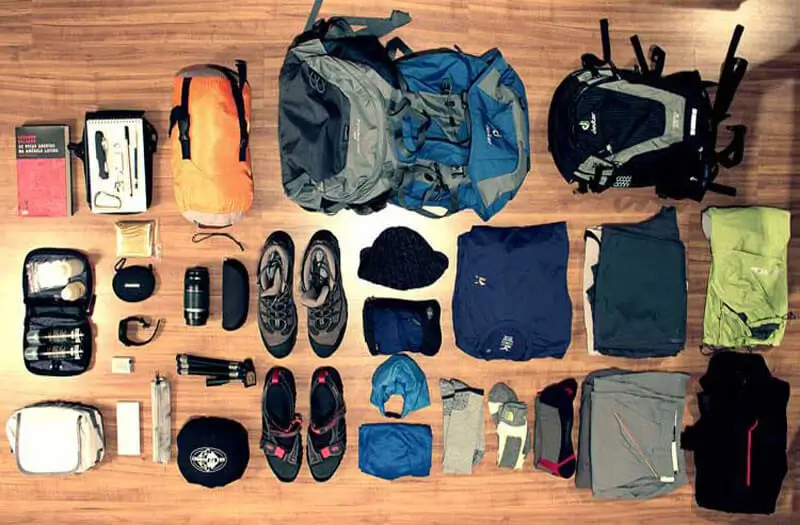
For clothing, we recommend the following pack list for the Manaslu Circuit trek;
A breathable water and windproof jacket
- Down jacket
- Thermal underwear
- Comfortable T-shirts
- Trekking or hiking pants
- Rain cloths
- Thick or comfortable socks
- Lightweight or thermal gloves
- A head accessory to block the sun (cap, hat, or scarf)
- Sunglasses
- Headlight with extra batteries and spare bulb
- Hiking boots with spare laces
- Comfortable slippers
Here’s what you should back for hygiene during the Manaslu Circuit trek;
- Toiletries (Toothbrush, shampoo, etc.)
- Bath towel and smaller towel
- Sunscreen
- Moisturizer
- Lip balm
- Tissues or a toilet paper roll
- Personal hygiene products
- Some extra equipment you might want to bring on the Manaslu Circuit trek:
- Sleeping bag
- Large trekking backpack
- Small secure pack for valuables
- Trekking poles
- Personal first aid kit
- Water purification tablets or LifeStraw
- Two reusable water bottles
Having these items packed while on the Manaslu Circuit trek will let you experience the trek without any worry!
Is it possible to customize the trip?
Yes you can customize this trip with Alpine Eco. In order to customize the Manaslu Circuit trek we request you to mail us your customization or request us a tailor-made trip. Do note that costs will vary depending on the alternation of your trip or trek.
Can I apply for a Manaslu trek permit individually?
No you must apply via a licensed trekking agency in Nepal. As the trek takes place in a restricted zone, the only way to book it is via an agency such as Alpine Eco Trek and Expedition. All permits will be included in the trek and furthermore, while you enjoy sightseeing we get all the papers in order!
Is there electricity in teahouses/guesthouses to charge my camera and cell phone?
Yes, teahouses or guesthouses do provide electricity to charge your camera or cell phone. There will be a charge for using the reception plugs and you’ll have to bring an adapter as well to fit in the plugs. The higher we go the charge may vary.
How busy is the Manaslu Circuit trek compared to the Annapurna Circuit trek?
It is safe to say that the Manaslu Circuit trek is far less busy compared to the Annapurna Circuit trek. For a couple of reasons. The first will be the cost price. The Manaslu Circuit trek requires more permits and is a bit more challenging than the Annapurna Circuit. The second is popularity, while most trekkers know about the Annapurna Himalayas few have yet to realize the allure of the world’s 8th-highest mountain Manaslu!
Will I get altitude sickness on the trek?
The chances of getting AMS or altitude sickness during the trek are quite minimal. The most common symptoms of altitude sickness are; insomnia, tiredness, headache, stomach ache, and nausea. If you are feeling any of these you should immediately report it to your guide so he can plan to prevent further sickness.
How do I prevent altitude sickness during the Manaslu Circuit trek?
Preventing is simple. Don’t elevate to fast to high! With less oxygen available the higher we go we need time to adjust our bodies. The best way to do this is to gain elevation and descend back down for the night. We do this by holding two acclimatization days with elevated hikes.
Can I combine the Manaslu Circuit trek?
Yes, the Manaslu is a popular combination trek with others. The most popular is with the Tsum Valley trek which also takes place in the Manaslu region. Another option is to combine the Manaslu Circuit and the Annapurna Circuit trek. Besides the extra days you won’t need any additional permits to combine with either of these two treks!
How are the locals during the Manaslu Circuit trek?
The locals during the Manaslu Circuit trek are very friendly and open. Providing lodging to wary trekkers is a great source of income for the locals as well. Most villages we encounter during the Manaslu circuit trek are either of mixed ethnicities or Sherpa settlements. Every village produces barely or herbs used in daily life.
Is this trek suitable for children and/or seniors?
Yes, the Manaslu Circuit trek is possible for children and, or seniors, but not highly recommended! The Larky La Pass is at a high altitude and children are less likely to acclimatize as well. Similarly for seniors. If not familiar with trekking in the Himalayas the Manaslu Circuit trek can be strenuous and uncomfortable. If you would like to know if the trek is possible for you, we do advise to send us an inquiry so we may personally advise you on the best rewarding trek for you!
Which popular mountains can I see during the Manaslu Circuit trek?
During the Manaslu Circuit trek you’ll be able to see a great number of popular high-altitude Himalayan Mountains! While on the trek incredible views of the following mountains come in sight:
Mt Manaslu (8,163m/26,781ft)
Mt Annapurna II
Mt Himal Chuli (7,893m/25,896ft)
Peak 29 aka Ngadi Chuli (7,871m/25,823ft)
Mt Ganesh Himal (7,422m/24,350ft)
Mt Shringi Himal (7,083m/23,238ft)
Mt Simrang
Mt Cho Danda
Mt Cheo Himal
Mt Kangguru

These are just a few of the mountains you’ll be able to see during the Manaslu Circuit trek. For a more detailed description of each mountain, our guide will provide you while on the trek.
